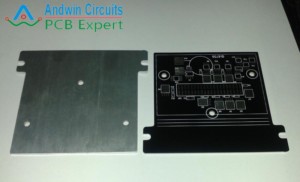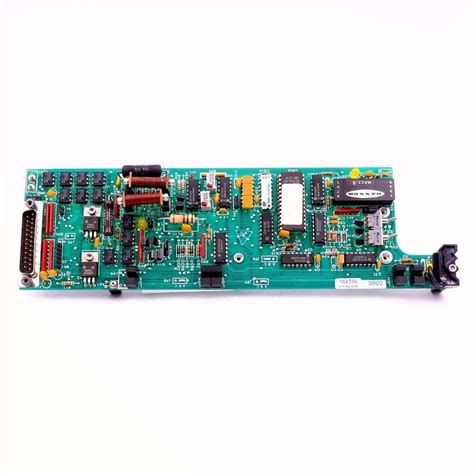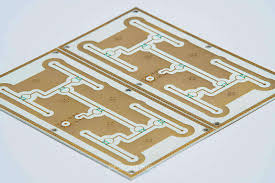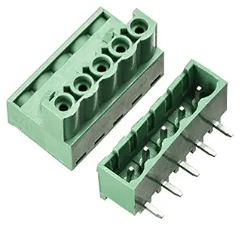Baking flex pcb
Designing Flexible PCBs for Baking Applications
Designing flexible printed circuit boards (PCBs) for baking applications requires a meticulous approach, as these specialized circuits must endure high temperatures and maintain functionality in demanding environments.
The process begins with selecting appropriate materials that can withstand the thermal stress encountered during baking. Polyimide, a high-temperature resistant polymer, is often the material of choice due to its excellent thermal stability and mechanical properties. This material ensures that the flexible PCB can endure the rigors of baking without compromising its structural integrity or performance.
Once the material is selected, the next step involves designing the circuit layout.
This phase is crucial, as the layout must account for the flexibility of the PCB while ensuring reliable electrical connections. Engineers must carefully consider the placement of components and the routing of traces to minimize stress points that could lead to failure. Utilizing advanced design software can aid in optimizing the layout, allowing for simulations that predict how the PCB will behave under various conditions. This proactive approach helps in identifying potential issues before the manufacturing process begins.
In addition to layout considerations, the choice of components is equally important.
Components used in baking applications must be able to withstand high temperatures and potential thermal cycling. Therefore, selecting components with appropriate temperature ratings is essential.
Furthermore, the method of attaching these components to the flexible PCB must be robust enough to handle the thermal expansion and contraction that occurs during baking. Surface mount technology (SMT) is commonly used, as it provides a reliable means of attaching components while maintaining the flexibility of the PCB.
The manufacturing process itself also plays a critical role in the success of flexible PCBs for baking applications.
Precision and quality control are paramount to ensure that the final product meets the stringent requirements of high-temperature environments.
During manufacturing, the flexible PCB undergoes several stages, including etching, drilling, and lamination. Each stage must be meticulously controlled to prevent defects that could compromise the PCB’s performance. Additionally, thorough testing is conducted to verify that the PCB can withstand the thermal conditions it will encounter in its intended application.
Once the flexible PCB is manufactured, it must undergo rigorous testing to ensure its reliability and durability.
Thermal cycling tests, where the PCB is subjected to repeated heating and cooling cycles, are commonly performed to simulate the conditions it will face during baking. These tests help in identifying any potential weaknesses or failure points, allowing for further refinement of the design if necessary. Moreover, electrical testing is conducted to verify that the PCB maintains its functionality under high-temperature conditions.
In conclusion, designing flexible PCBs for baking applications is a complex process that requires careful consideration of materials, layout, components, and manufacturing techniques.
By selecting high-temperature resistant materials like polyimide, optimizing the circuit layout, choosing appropriate components, and ensuring precision in manufacturing, engineers can create flexible PCBs that perform reliably in demanding baking environments.
Rigorous testing further ensures that these PCBs can withstand the thermal stress they will encounter, ultimately leading to a successful and durable product. Through meticulous design and thorough testing, flexible PCBs can be effectively utilized in baking applications, providing reliable performance and enhancing the overall efficiency of the baking process.

Material Selection for High-Temperature Flexible PCBs
When it comes to the intricate process of baking flexible printed circuit boards (PCBs), the selection of materials capable of withstanding high temperatures is paramount. The performance and reliability of these PCBs are heavily influenced by the materials chosen, making it essential to understand the properties and suitability of various options available in the market.
As we delve into the material selection for high-temperature flexible PCBs, it becomes evident that a meticulous approach is required to ensure optimal functionality and longevity.
To begin with, polyimide is a widely recognized material in the realm of high-temperature flexible PCBs.
Known for its exceptional thermal stability, polyimide can endure temperatures up to 400°C, making it an ideal candidate for applications that demand resilience under extreme conditions. Its inherent flexibility, coupled with its ability to maintain mechanical integrity at elevated temperatures, makes polyimide a preferred choice for many engineers and designers. Furthermore, polyimide’s excellent dielectric properties and chemical resistance add to its appeal, ensuring that the PCB remains reliable even in harsh environments.
In addition to polyimide, liquid crystal polymer (LCP) is another material that has garnered attention for high-temperature applications.
LCPs exhibit remarkable thermal performance, withstanding temperatures up to 260°C. Their low moisture absorption and excellent dimensional stability make them suitable for applications where precision and reliability are critical. Moreover, LCPs offer superior electrical properties, which are crucial for maintaining signal integrity in high-frequency applications. The combination of these attributes makes LCPs a viable alternative to polyimide, particularly in scenarios where specific performance characteristics are required.
Transitioning from the discussion of base materials, it is also essential to consider the adhesives used in the construction of high-temperature flexible PCBs.
The choice of adhesive can significantly impact the overall performance and durability of the PCB. High-temperature adhesives, such as those based on silicone or epoxy, are commonly employed due to their ability to maintain bond strength at elevated temperatures. Silicone adhesives, in particular, offer excellent thermal stability and flexibility, making them suitable for dynamic applications where the PCB may be subjected to repeated bending and flexing. On the other hand, epoxy adhesives provide robust mechanical strength and chemical resistance, ensuring the integrity of the PCB in demanding environments.
Moreover, the selection of conductive materials for high-temperature flexible PCBs is equally critical.
Copper, with its excellent electrical conductivity and thermal performance, is the most commonly used conductive material. However, for applications requiring enhanced thermal management, materials such as aluminum or silver can be considered. These materials offer superior thermal conductivity, aiding in the efficient dissipation of heat generated during operation. The choice of conductive material should align with the specific requirements of the application, ensuring that the PCB can handle the thermal and electrical demands placed upon it.
In conclusion, the material selection for high-temperature flexible PCBs is a multifaceted process that demands careful consideration of various factors. Polyimide and liquid crystal polymer stand out as robust base materials, each offering unique advantages in terms of thermal stability and electrical performance. The choice of adhesives and conductive materials further influences the overall reliability and functionality of the PCB. By meticulously selecting materials that align with the specific requirements of the application, engineers can ensure the creation of high-temperature flexible PCBs that deliver exceptional performance and durability in even the most challenging environments.
Step-by-Step Guide to Baking Flexible PCBs
Baking flexible printed circuit boards (PCBs) is a crucial step in the manufacturing process, ensuring the durability and reliability of the final product. This process involves a series of meticulous steps that must be followed to achieve optimal results. To begin with, it is essential to understand the materials and tools required for baking flexible PCBs. These include the flexible PCB itself, a baking oven, temperature monitoring equipment, and appropriate safety gear. The first step in the process is to prepare the flexible PCB by cleaning it thoroughly. Any contaminants or residues on the surface can affect the quality of the final product. Therefore, it is advisable to use a suitable cleaning solution and a lint-free cloth to ensure the PCB is free from any impurities.
Once the PCB is clean, the next step is to preheat the baking oven.
It is crucial to set the oven to the correct temperature, typically around 120°C to 150°C, depending on the specific requirements of the PCB material. Preheating the oven ensures that the PCB will be exposed to a consistent temperature throughout the baking process. While the oven is preheating, it is important to place the PCB on a baking tray or a suitable surface that can withstand high temperatures. It is also advisable to use a non-stick surface or a release liner to prevent the PCB from sticking to the tray.
After the oven has reached the desired temperature, carefully place the PCB inside.
It is essential to monitor the temperature closely using temperature monitoring equipment to ensure it remains within the specified range. The baking time can vary depending on the thickness and material of the PCB, but it typically ranges from 30 minutes to an hour. During this time, it is important to avoid opening the oven door frequently, as this can cause temperature fluctuations that may affect the quality of the PCB.
Once the baking time is complete, it is crucial to allow the PCB to cool down gradually.
Rapid cooling can cause thermal shock, which can lead to cracks or other defects in the PCB. Therefore, it is advisable to turn off the oven and let the PCB cool down inside the oven for a few minutes before removing it.
After removing the PCB from the oven, it is important to inspect it for any signs of defects or irregularities. This includes checking for warping, cracks, or any other visible issues that may have occurred during the baking process. If any defects are found, it may be necessary to repeat the baking process or make adjustments to the temperature and baking time.
In conclusion, baking flexible PCBs is a critical step that requires careful attention to detail and adherence to specific guidelines. By following the steps outlined above, it is possible to achieve a high-quality, reliable PCB that meets the necessary standards. This process not only enhances the durability of the PCB but also ensures its performance in various applications. Therefore, it is essential to invest the necessary time and effort into this process to achieve the best possible results.
Common Challenges in Baking Flexible PCBs and How to Overcome Them
Baking flexible printed circuit boards (PCBs) is a critical step in the manufacturing process, ensuring the durability and functionality of the final product. However, this process is fraught with challenges that can compromise the quality of the PCBs if not properly addressed.
One of the most common issues encountered is the warping of the flexible substrate.
This can occur due to uneven heating or cooling during the baking process. To mitigate this, it is essential to use a controlled environment where temperature and humidity are carefully monitored. Employing a vacuum oven can also help in maintaining uniform pressure and temperature, thereby reducing the risk of warping.
Another significant challenge is the potential for delamination.
This happens when the layers of the PCB separate, often due to inadequate bonding during the lamination process. To overcome this, it is crucial to ensure that the materials used are compatible and that the lamination process is executed with precision. Pre-baking the flexible substrate can also help in removing any residual moisture, which is a common cause of delamination. Additionally, using a high-quality adhesive that can withstand the baking temperatures will further enhance the integrity of the PCB.
The issue of thermal expansion is also a concern when baking flexible PCBs.
Different materials expand at different rates when exposed to heat, which can lead to misalignment and other structural issues. To address this, it is advisable to use materials with similar coefficients of thermal expansion. Moreover, gradual heating and cooling cycles can help in minimizing the stress caused by thermal expansion. This approach not only ensures the structural integrity of the PCB but also enhances its performance.
Contamination is another hurdle that can affect the quality of flexible PCBs.
Dust, oils, and other contaminants can interfere with the adhesion of layers and the overall functionality of the PCB. To combat this, maintaining a cleanroom environment during the baking process is essential. Regular cleaning of equipment and using anti-static measures can also help in reducing contamination. Furthermore, implementing stringent quality control measures, such as visual inspections and automated optical inspections, can help in identifying and addressing contamination issues early in the process.
The complexity of the circuit design can also pose challenges during the baking process.
Intricate designs with multiple layers and fine traces require precise control over the baking parameters to ensure that all components are properly cured. Advanced software tools can be employed to simulate the baking process and identify potential issues before they arise. Additionally, collaborating closely with design engineers can help in optimizing the layout for better manufacturability.
Lastly, the choice of baking equipment plays a crucial role in overcoming these challenges.
Investing in high-quality ovens with advanced features such as programmable temperature profiles and real-time monitoring can significantly improve the outcome. Regular maintenance of the equipment is also vital to ensure consistent performance.
In conclusion, while baking flexible PCBs presents several challenges, these can be effectively managed through careful planning and execution. By addressing issues such as warping, delamination, thermal expansion, contamination, and design complexity, manufacturers can ensure the production of high-quality flexible PCBs. Employing advanced equipment and maintaining a controlled environment further enhances the reliability and performance of the final product. Through these measures, the common challenges in baking flexible PCBs can be successfully overcome, leading to superior and reliable electronic devices.

Innovative Uses of Flexible PCBs in Modern Baking Equipment
In the ever-evolving landscape of culinary technology, the integration of flexible printed circuit boards (PCBs) into modern baking equipment represents a significant leap forward. These innovative components, traditionally associated with electronics and computing, are now finding their way into the kitchens of professional bakers and home enthusiasts alike.
The application of flexible PCBs in baking equipment not only enhances functionality but also introduces a new level of precision and efficiency to the baking process.
To begin with, flexible PCBs are characterized by their ability to bend and conform to various shapes, making them ideal for integration into the often complex and compact designs of modern baking appliances. This adaptability allows for the creation of more streamlined and ergonomic equipment, which can be crucial in a busy kitchen environment where space and ease of use are paramount. For instance, in high-end ovens, flexible PCBs can be embedded into the control panels, enabling more intuitive and responsive touch controls.
This not only improves the user experience but also ensures that the equipment can withstand the high temperatures and rigorous conditions typical of a baking environment.
Moreover, the use of flexible PCBs in baking equipment facilitates advanced temperature control and monitoring systems. Accurate temperature regulation is essential in baking, where even slight deviations can affect the quality of the final product. Flexible PCBs can be integrated with sensors that provide real-time data on temperature and humidity levels within the oven. This data can then be used to make precise adjustments, ensuring that baked goods are cooked evenly and to perfection. Consequently, bakers can achieve consistent results, which is particularly important in commercial settings where product uniformity is critical.
In addition to enhancing temperature control, flexible PCBs contribute to the overall durability and longevity of baking equipment. Traditional wiring and circuitry can be prone to wear and tear, especially in environments where they are exposed to heat, moisture, and frequent use.
Flexible PCBs, on the other hand, are designed to be more resilient and can endure the harsh conditions of a kitchen without compromising performance. This durability translates to fewer maintenance issues and a longer lifespan for the equipment, ultimately providing better value for both professional and amateur bakers.
Furthermore, the integration of flexible PCBs into baking equipment opens up new possibilities for connectivity and smart technology. As the Internet of Things (IoT) continues to expand, more kitchen appliances are becoming interconnected, allowing for remote monitoring and control. Flexible PCBs can be embedded with wireless communication modules, enabling bakers to control their ovens and other equipment via smartphones or tablets. This connectivity not only adds convenience but also allows for the collection and analysis of baking data, which can be used to refine techniques and improve outcomes.
In conclusion, the innovative use of flexible PCBs in modern baking equipment represents a fusion of culinary art and cutting-edge technology. By enhancing functionality, improving precision, and increasing durability, these components are revolutionizing the way we approach baking. As technology continues to advance, it is likely that we will see even more sophisticated applications of flexible PCBs in the kitchen, further blurring the lines between traditional cooking methods and modern technological innovation. This integration not only benefits professional bakers but also empowers home bakers to achieve professional-quality results, making the art of baking more accessible and enjoyable for all.






